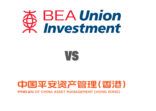Dividends and EM equities
Amit Prakash, managing director at BMO Global Asset Management, proposed a strategy that merges two themes: the power of dividends and emerging market equities.
To demonstrate dividend power, he showed a chart of the S&P 500 over the trailing 70 years. Over that time period, 45% of total return for investors came from dividends.
“That’s a very large number and it shows dividend investing is not restricted to conservative portfolios, but to anyone seeking total return.”
Prakash admitted that the sheen has come off of emerging markets in the last few years, particularly Russia and Ukraine. But it is important to break the region down into sub-cateogries — emerging, established, maturing and near developed — and apply different weightings to each.
He has “a natural bias towards less developed GEM markets which tend to benefit from demographics, urbanisation and productivity improvements that translate into demand for consumer goods, financial inclusion and services”.
His team seeks out companies that demonstrate cash flow growth in those markets, combined with consistent sustainable dividends — the marriage of income and growth.
The case for India bonds
An India bond strategy, based on attractive market characteristics, was proposed by Gordon Rodrigues, director and head of Asian rates & FX on the Asian fixed income team at HSBC Global Asset Management.
The Indian bond market is still dominated by government issuance, he said. “The corporate market is still underdeveloped, but likely to grow strongly in the coming years.”
The bond market is also liquid. India’s yield curve is flat, “which means we don’t give up yield irrespective of our duration view”, he said.
The pro-business reform government of Narendra Modi is also addressing some of the critical concerns investors have had about India in the past.
First, economic growth is expected in the 6% range next year, Rodrigues said. “That’s good for the bond market because it’s slow recovery growth, which does not bring demand side inflationary pressures.”
Second, lower oil prices are helping India to reduce the fiscal deficit, which means there will not be an excessive supply of bonds.
Another headwind has been inflation, which was round 9-10% the last two years. “That is moderating, thanks to lower oil and the Reserve Bank of India’s anti-inflation policy credibility.”
He also expects the rupee to be range bound in the medium term.
He does expect more interest rate cuts, which would mean a ten-year bond could be trading about 7.25% instead of the current 7.7%.
Yet Rodrigues believes India bonds will have upward momentum in 2015 and will still manage to provide very high levels of absolute and relative yields.
Loans over bonds
Loans have several advantages over bonds when it comes to generating income, argued Jeff Bakalar, managing director, senior loan group, Voya Investments, which spun out of Dutch parent ING.
Loans are senior and secured by a company’s assets.
“In the event of default, you see much higher recoveries with senior loans than with unsecured high yield bonds by a factor of two.”
Second, the loans Voya invests in are floating rate, not fixed. “You don’t have that natural inverse relationship between rising rates and declining values.
“Our coupon is now a fixed coupon with two components. The base rate, which is LIBOR. On top of that is a credit spread that represents a risk premium. Within 45-60 days on average the LIBOR rate moves and the credit spread resets over the new LIBOR within that 45-60 day period.
“Income rises with interest rates [unlike bonds]. That’s why investors are attracted to the asset class today.”
He admitted 2014 fell short of expectations with a total 1.6% return on senior secured loans when the firm was expecting 4-5%.
“The headwinds were that mutual fund investors acted impatiently for rates to rise, and so they became a net redeemer. We are a mark-to-market asset class and supply and demand will have an impact on loans. But [2014] does not change the investment thesis.”
Historically, senior secured loans have delivered positive returns over economic cycles every year since 1997, with the exception of 2008, he said.
Credit spreads in loans are going up in 2015, he believes. “In this asset class, you can see credit spreads and loan prices rising at the same time, unlike bonds.”















